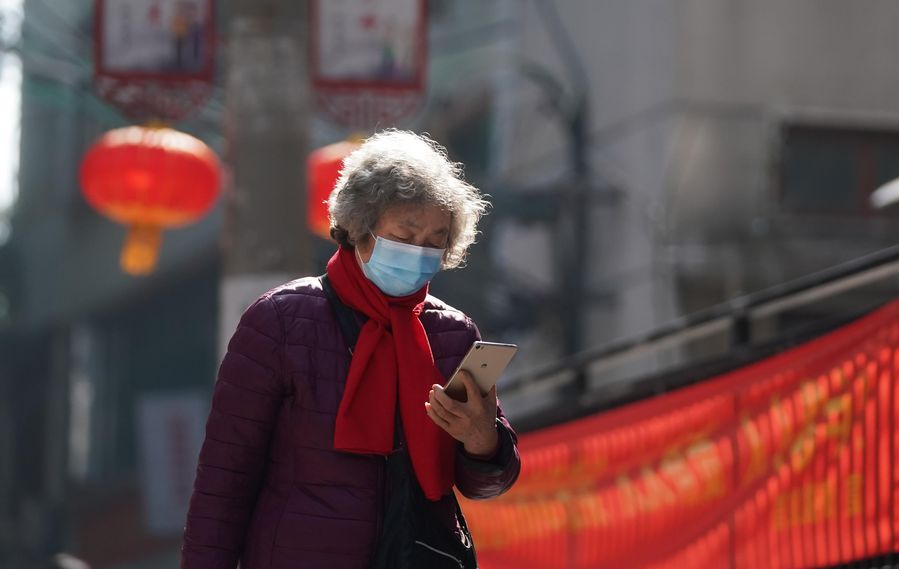
A resident checks information sent by community on her phone in Wuchang District of Wuhan, the epicenter of the novel coronavirus outbreak in central China's Hubei Province, Feb. 9, 2020. (Xinhua/Cheng Min)
BEIJING, Feb. 12 (Xinhua) -- China has stepped up efforts to curb the spread of the novel coronavirus. Here are the latest developments:
-- China's National Health Commission said on Wednesday that it received reports of 2,015 new confirmed cases of novel coronavirus infection and 97 deaths on Tuesday from 31 provincial-level regions and the Xinjiang Production and Construction Corps. By the end of Tuesday, a total of 1,113 people had died of the disease and 44,653 confirmed cases had been reported on the Chinese mainland.
-- Chinese respiratory expert Zhong Nanshan said the epidemic peak should appear in mid-to-late February, but the inflection point is still undetermined.
-- Central China's Hubei Province, the hardest-hit province, reported 1,638 new confirmed injection cases and 94 new deaths on Tuesday. The capital city of Wuhan reported 1,104 new infections and 72 new deaths.
-- The city of Huanggang, one of the hardest-hit cities in Hubei, had identified 13,000 feverish individuals during a screening campaign that covered communities, public spaces, road checkpoints as well as enterprises and public institutions. Everyone with a fever has been quarantined and put under observation in hospitals.
-- The Ministry of Commerce released a circular to arrange for the steady supply of daily necessities in key cities to win the battle against the new virus. Supply of daily necessities include rice, flour, cooking oil, meat, eggs, dairy products, vegetables and instant food.
-- Chinese authorities called for improved humanistic care and a safer working environment for medical staff at the frontline against the novel coronavirus pneumonia, as well as stronger publicity for deeds of outstanding figures among medical personnel. They demanded financial subsidies be provided to frontline medical staff and epidemic prevention workers, and easy access to identify occupational injuries for medical personnel. ■



